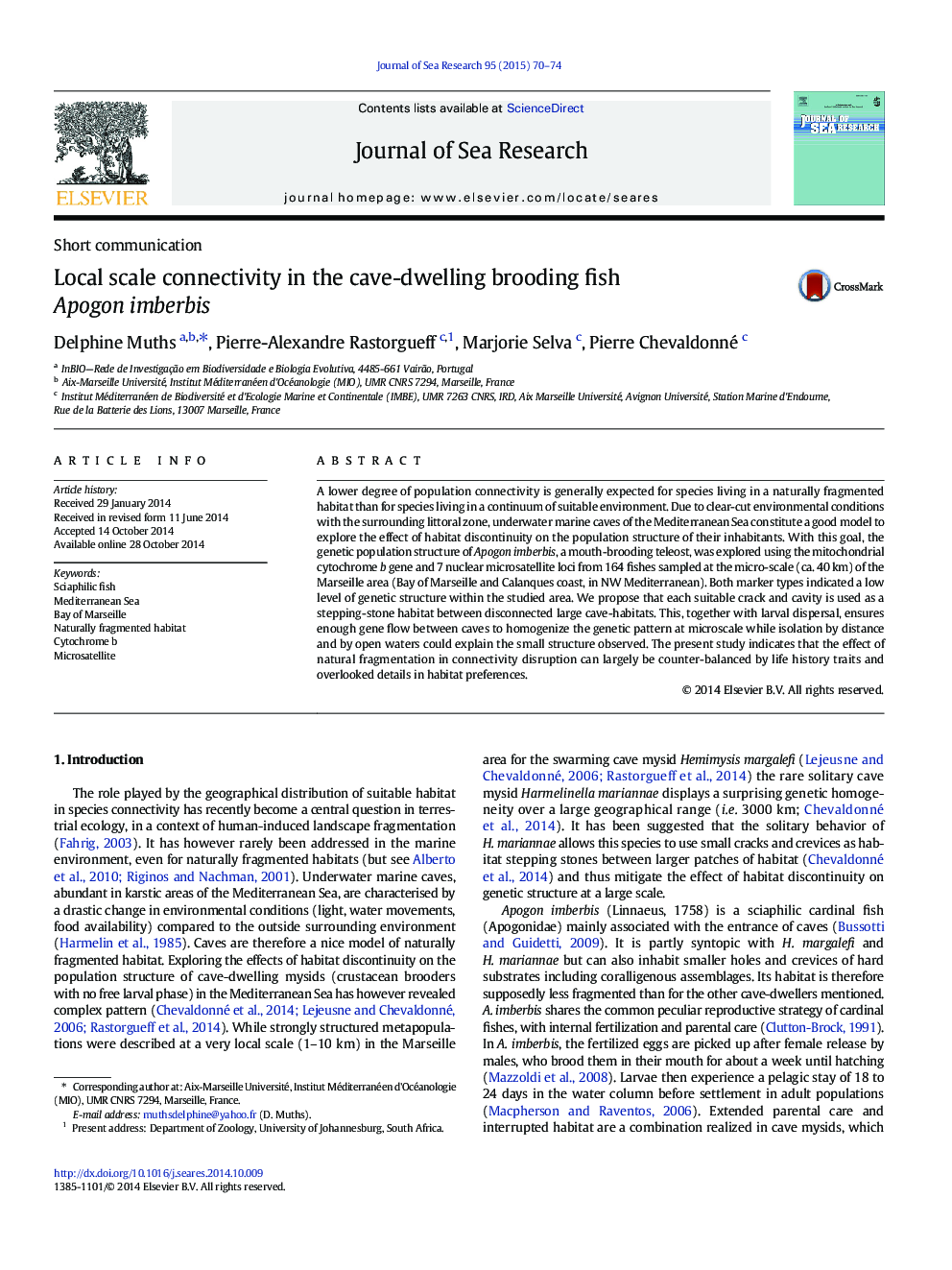| Article ID | Journal | Published Year | Pages | File Type |
|---|---|---|---|---|
| 4549747 | Journal of Sea Research | 2015 | 5 Pages |
•Apogon imberbis is a mouth-brooding teleost fish living in Mediterranean underwater marine caves.•Extended parental care and interrupted habitat is a combination thought to reduce population connectivity.•Low genetic structure (mtDNA, microsatellite) was found at ca. 40 km scale with some isolation by distance and by open waters.•Natural habitat fragmentation is here counterbalanced by life history traits and overlooked habitat preferences.
A lower degree of population connectivity is generally expected for species living in a naturally fragmented habitat than for species living in a continuum of suitable environment. Due to clear-cut environmental conditions with the surrounding littoral zone, underwater marine caves of the Mediterranean Sea constitute a good model to explore the effect of habitat discontinuity on the population structure of their inhabitants. With this goal, the genetic population structure of Apogon imberbis, a mouth-brooding teleost, was explored using the mitochondrial cytochrome b gene and 7 nuclear microsatellite loci from 164 fishes sampled at the micro-scale (ca. 40 km) of the Marseille area (Bay of Marseille and Calanques coast, in NW Mediterranean). Both marker types indicated a low level of genetic structure within the studied area. We propose that each suitable crack and cavity is used as a stepping-stone habitat between disconnected large cave-habitats. This, together with larval dispersal, ensures enough gene flow between caves to homogenize the genetic pattern at microscale while isolation by distance and by open waters could explain the small structure observed. The present study indicates that the effect of natural fragmentation in connectivity disruption can largely be counter-balanced by life history traits and overlooked details in habitat preferences.
